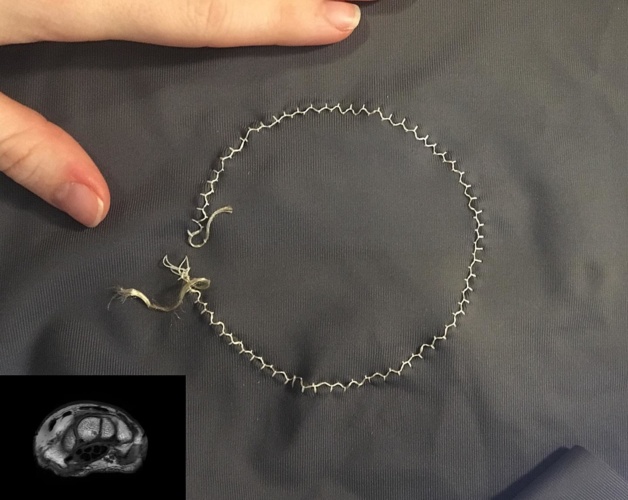
MRI tests can be uncomfortable as rigid radio-frequency (RF) coils are often used. The Purdue team used a conductive silver-coated thread that was zigzag stitched onto stretchable sportswear to create a single-loop receive RF coil. Its design aims to enhance patient comfort during MRI scans while maintaining or improving the resulting image quality.
Brain implant electrode material shows MRI compatibility
New preclinical MRI coil delivers 3x better resolution
"Imagine going for an imaging session and they strap on a comfortable fabric with the coils embedded inside," said Joseph Rispoli, an assistant professor of biomedical engineering and electrical and computer engineering at Purdue.
"We created an adaptable, wearable and stretchable fabric embroidered with conductive threads that provides excellent signal-to-noise ratio for enhanced MRI scanning."
According to the Purdue team, the technology is similar to that found in applications for the aerospace and defence industries. Rispoli said the technology also is applicable to breast MRI and to enhancing medical device communication using wearable or implantable antennas.
During testing, the coil demonstrated multi-directional stretchability and flexibility while maintaining conductivity and stitch integrity. Despite a slight decrease in signal-to-noise ratio (SNR) compared with traditional coils, the team believes further improvements could see the new coil match or even exceed the imaging performance of existing technology, while greatly improving patient comfort.
"Our preliminary results show a full-scale device will be superior in all aspects of diagnostic testing, including increased sensitivity and fewer false positives," Rispoli said.
The research was partially funded by the National Institutes of Health in the US. Published in IEEE Transactions on Biomedical Engineering, the study was also presented by the Purdue team at the International Society for Magnetic Resonance in Medicine Annual Meeting and the IEEE International Engineering in Medicine and Biology Conference. Partners are now being sought by the team to further develop the technology.




Red Bull makes hydrogen fuel cell play with AVL
Formula 1 is an anachronistic anomaly where its only cutting edge is in engine development. The rules prohibit any real innovation and there would be...